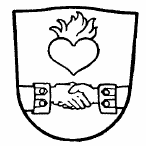
 |
Home Who Migration Contact Photos Letter from Henri Return to Chabag Tauredunum Event Theban Legions |
  |
|
| The Tardent Family from Ormont-Dessous, Vaud, Switzerland. |
 |
|
|
A handful of Swiss families left home and hearth to grow grapes, not on the shores of Lac Leman, Switzerland, but on the shores of Lac Liman in Bessarabia, at the invitation of the Russian Tsar in the early years of the nineteenth century. The colony of Chabag, or Shabo as it is called today is part of the Ukraine. The colony ceased to exist when it was appropriated by the Russian army during World War II. Switzerland repatriated many former colonists. Louis Samuel Vincent Tardent, his wife Uranie Grandjean, in the company of equally trepidatious families from canton Vaud, established a Swiss grape growing colony - a truly epic adventure, the final chapter of which only played out post world war 2. The tale is beautifully told by Olivier Grivat's 1993 publication "Les Vignerons Suisses du Tsar". Tsar Alexander I of Russia, whose forces defeated Napoleon's grande armee in 1812, died in 1825. As a young prince, he had for his tutor and mentor the distinguished Swiss statesman Frederic-Cesar de la Harpe, who is regarded as one of the founders of the canton of Vaud. After Napoleon's final defeat at Waterloo in 1815, various national boundaries were altered, and it was decided at the Congress of Vienna, that Bessarabia would be ceded to Russia. This area contained many neglected vineyards which had been abandoned by the Turks after their conquest by the Russians. The Russian government guaranteed the Swiss freedom of religion, exemption from service in the Tsar's army and the right to govern themselves in accordance with their democratic principles. Each family was granted an area of farmland slightly in excess of 60 hectares and was exempted from various taxes and government charges.
Below: Rare family photo from colony. Charles, son of Charles Rodolphe Tardent, grandson of Louis Vincent, with his children
|
Above: Family of Oscar Dorgny Below: Typical Swiss colony dwelling Uranie's account of the voyage to Bessarabia, copied here in translation, is one of those. The original, in French, appears to be lost. This diary is a charming and perceptive account, providing some wonderful insights into the cultural mores of the times. Uranie's Diary.
In all, with a few other settlers, the expedition comprised only about 10 adults plus the children, and they were faced with the daunting task of traveling some 2,500 kilometres across Europe by horse and wagonette through Switzerland, Austria, Czech Republic, Slovakia, Poland and the Ukraine, a journey of 103 days before they reached their future home on the shores of the Black Sea. There are many interesting accounts and researches of this historic Swiss colony by different historians, including descendants of the families involved, keeping the memory of the colony alive. A web search will uncover some wonderful resources and accounts of this significant venture in 19th century Swiss history. An historical account of the history of the colony by the Societe Chabag Lausanne can be found here in French, German and English. It provides an overview of events from the foundation of the colony to its closure, with historical documents and input from many of the descendants of the intrepid Vaudois family colonists. Links and contacts provide an excellent insight into this unique settlement.
|
|||||||